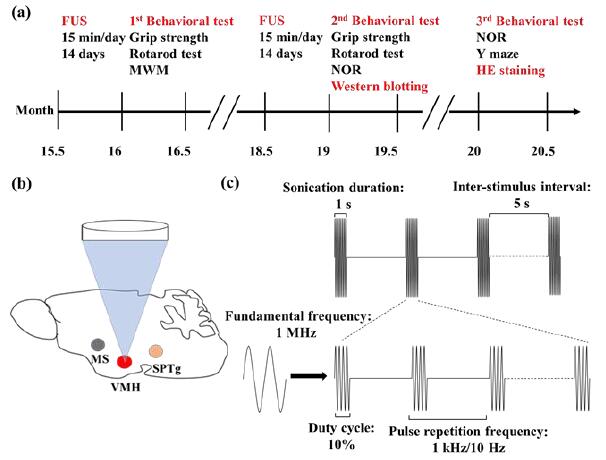Scientists Demonstrate Modulation Effect of Transcranial Ultrasound Stimulation on Hypothalamus
Date:10-04-2020 | 【Print】 【close】
Transcranial ultrasound stimulation (TUS) is emerging as new non-invasive brain stimulation method that can achieve a highly focused stimulation also of deeper brain areas.
The hypothalamus is the link between the endocrine and nervous systems, according to a research published in IEEE Transactions on Ultrasonics, Ferroelectrics, and Frequency Control, the scientists from the Shenzhen Institutes of Advanced Technology (SIAT) of the Chinese Academy of Sciences demonstrated that TUS could effectively modulate the hypothalamus.
Previous study has been shown that ultrasound could induce brain activity and the sensory discrimination ability of the primary somatosensory cortex of humans. However, the effect of ultrasound neuromodulation on hypothalamus is unknown.
Scientist used a low-intensity ultrasound to stimulate the hypothalamus for controlling the aging of mice.
The TUS included an arbitrary waveform generator and a power amplifier. A focused transducer with a fundamental frequency (FF) of 1 MHz and a diameter of 25 mm was used.
The mice were randomly divided into three groups, through the experiments of two sessions of focused ultrasound stimulation (FUS) and three sets of behavioral tests, the results suggested that ultrasound stimulation could modulated the cognitive abilities of mice.
Besides, scientists used the western blotting analysis to indicate the expression levels of Bcl-2, Bax, NMDAR2B, Iba1, TNF-α, and IL-1β in ventromedial hypothalamic nucleus (VMH) of the mice, and the results showed that the responses of the apoptosis factors and inflammatory cytokines both decreased after ultrasound stimulation, which delayed the symptoms of aging.
The study provided new evidence of ultrasonic neuromodulation and demonstrated that TUS has the potential to delay aging, it is noteworthy that no tissue damage or hemorrhaging in the hypothalamus after ultrasound stimulation.

Overview of the experimental design, time sequence of TUS, and ultrasound distributions. (Image by MENG Long)
Media Contact:
ZHANG Xiaomin
Email: xm.zhang@siat.ac.cn